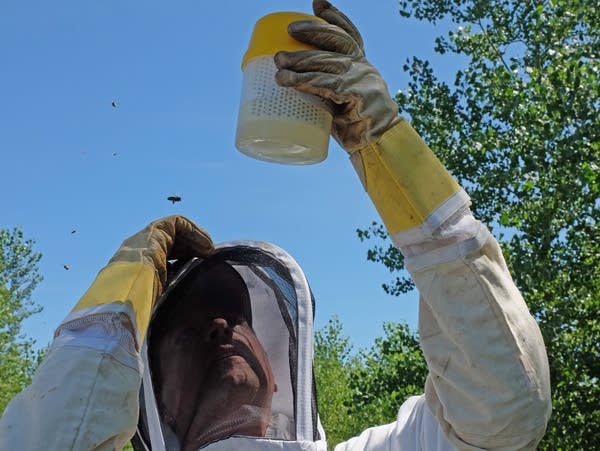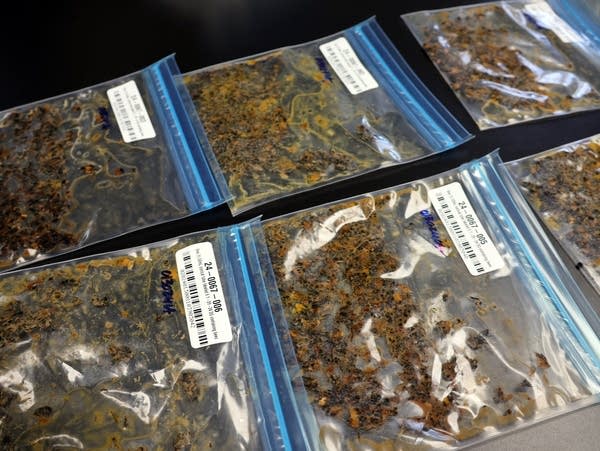
A mix-up over bioengineered tomato seeds sparked fears about spread of GMO crops
April 28, 2024
Could This Halal Burger Mini-Chain Become the Next Five Guys?
April 29, 2024DNA testing shows honey bees tend to have the same level of disease no matter who cares for them.
Zack Bateson is research manager at the nonprofit National Agricultural Genotyping Center in Fargo.
He spent two years studying the best techniques for monitoring viruses, parasites and other pathogens in honey bees. He tested bees and honey from backyard hobbyists and large commercial apiaries.
“And when we looked across the two groups in terms of total pathogens, so actually quantifying all the pathogens, there was no difference between hobby and commercial beekeepers,” said Bateson. “So according to our data set, you can’t point fingers on who’s more diseased than the other one.”
Bateson says the finding is significant because conventional wisdom has been that bees kept by hobbyists have more disease in their bees.
Bateson also compared DNA analysis of bees collected from hives and honey taken from the same hives. He hoped honey would be a non-invasive way to monitor for disease, but did not find that to be the case.
“There are just certain pathogens, even some viruses, that were not found in the honey compared to the adult bees,” said Bateson. “So our recommendation is if you’re interested in knowing and understanding the pathogen diversity in your colonies, it’s still better to test the adult bees versus honey.”
The nonprofit DNA research center tests for 21 pathogens in honeybees. Bateson said the cost of DNA testing means the method isn’t feasible for widespread monitoring of honey bees, but it is useful for analyzing pathogen levels and better understanding the prevalence of disease.
The center also has a new DNA test to monitor for a potential threat to honeybees. The tropilaelaps mite is widespread in Asia and is considered a significant risk to U.S. honeybees.
U.S. beekeepers have been monitoring for the tropilaelaps mite for several years.

It’s smaller than the varroa mite which now plagues U.S. beekeepers, spreading viruses among honeybees. Bateson said small size and rapid movement makes tropilaelaps challenging to find without a DNA test.
”The important thing with diagnostics is to have it in place before there’s a problem. Because if you’re scrambling to develop a test, that’s just wasted time,” said Bateson. “We haven’t found it which is great, but we’ve tested about 1000 samples already from beekeepers that sent us samples."
The center has contracts with several states to monitor for tropilaelaps this summer, said Bateson.





